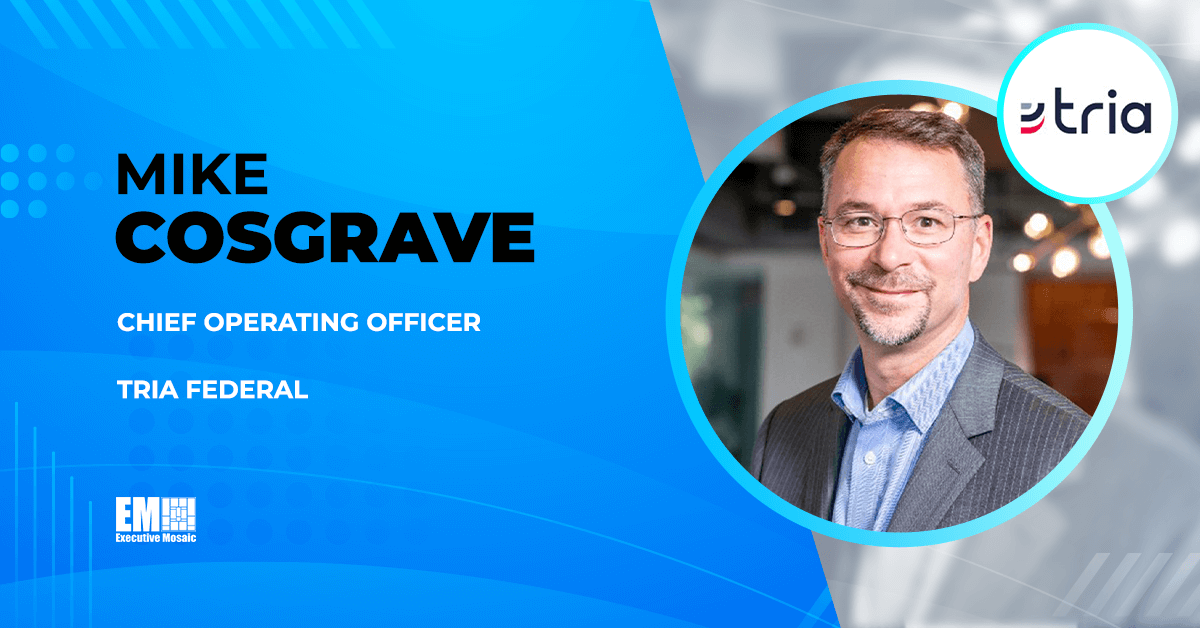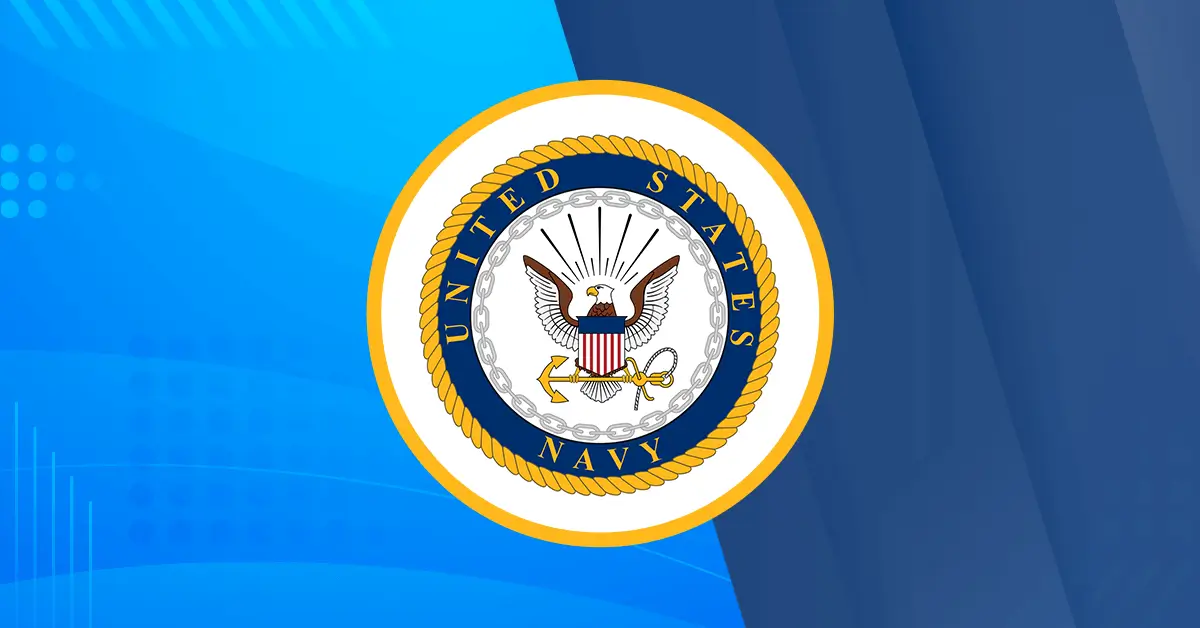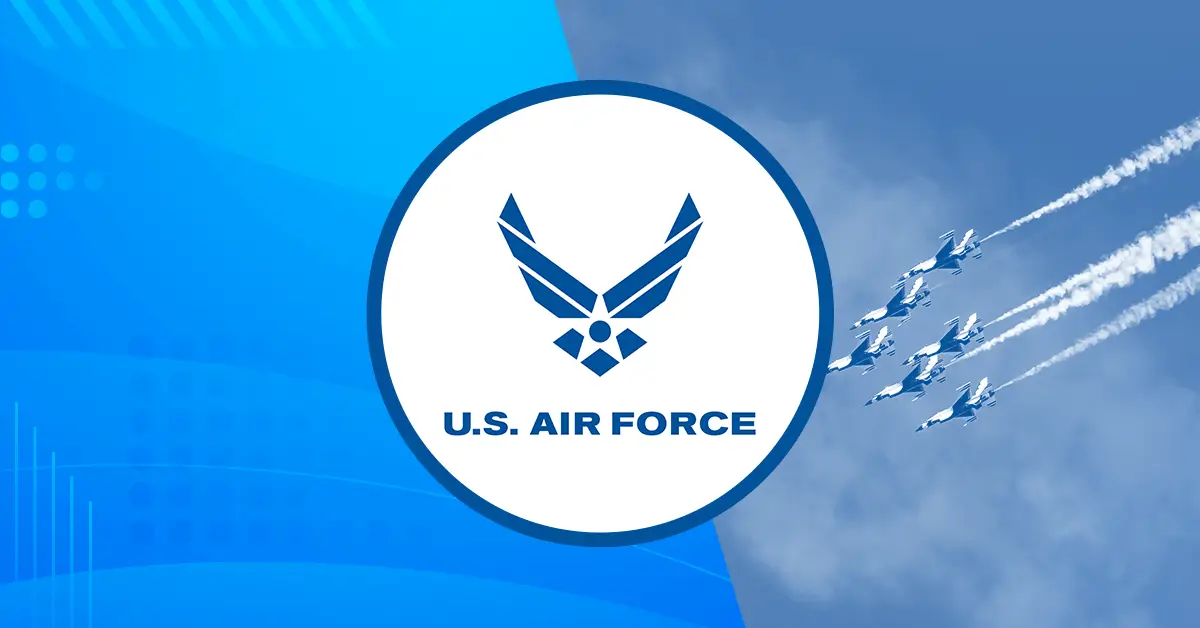Tria Federal is a leading middle-market government contractor that is making its mark providing digital lifecycle information technology services for federal health, defense and public safety clients. Formed through the merger of three smaller companies, it’s about to celebrate its second year of business.
We wanted to learn more about the organization, so we sat down with chief operating officer Mike Cosgrave, a veteran in the GovCon space. Prior to joining Tria, Cosgrave began as a software engineer but after the dot-com bubble burst shifted to operationally-focused roles at companies including ManTech, Six3 Systems, CACI International, Dovel Technologies and Guidehouse.
In the interview, Cosgrave shares his unique perspective on the changing needs of the federal government and how Tria is suited to meet these needs. He touches on how the company is combining advisory and technical proficiencies, outlines its key differentiators as a business and anticipates where things are headed in the future.
Join the Potomac Officers Club for the 5th Annual CIO Summit on April 17 to hear from top government chief information officers on what tools and technologies are enabling their missions. Register here! Tickets are going fast.
How has Tria Federal’s culture evolved since you combined three businesses to create a new company last year?
Building on our decades-long legacy of excellence as a foundation, Tria brings the best of three proven leaders of industry together into one powerhouse team delivering transformative IT and advisory solutions across the federal sector. Our primary focus is the healthcare market, including clients like the Department of Veterans Affairs and the Defense Health Agency, but we also serve other sectors like the Department of Defense, Department of Homeland Security and federal civilian agencies. With around a thousand employees, we’re a large middle-market company backed by private equity firm Sagewind Capital.
In my first six months here, I’ve been inspired by the passion and commitment of our team members to serving customer missions. This experience has fueled my confidence in our ability to build a fulfilling and exciting culture at Tria. Our focus in 2024 will be on shaping that culture collaboratively, in response to both top-down and bottom-up inputs. We aim to foster a culture that’s transparent, inclusive, and engaging for our workforce, ultimately benefiting both the company and our employees.
What are the key opportunities or challenges in building a new culture that will impact your success as well as your ability to attract and retain top-level talent?
The primary opportunities and challenges inherent in any platform company, which I’ve observed across various organizations, revolve around the amalgamation of distinct corporate cultures, histories and approaches to operations. Combining these entities poses the challenge of establishing a cohesive new culture while respecting and integrating the existing ones. While daunting, this task is achievable. In my experience, there’s a palpable willingness among our employees to embrace this transition. They take pride in their past accomplishments yet eagerly anticipate Tria’s future trajectory. The challenge lies in crafting a unified culture, while the opportunity lies in harnessing our employees’ enthusiasm to actively shape it.
What’s the most impactful trend you’re currently seeing in the GovCon market? How are you seeing GovCon organizations respond to that trend?
An interesting trend I’ve been observing, evident not only within the DOD but also permeating into federal civil services and beyond, pertains to the government’s approach to tackling significant digital transformation initiatives. Historically, the conventional method involved government contractors providing professional services to support agencies or offices, essentially acting as an extension of the government to fulfill their mission. These contractors often segmented tasks, bringing in specialized expertise as needed, resulting in a disjointed process. However, there seems to be a gradual departure from this model towards a more integrated approach, resembling a results management framework.
In this evolving paradigm, instead of compartmentalized program management and technical execution, there’s a movement toward consolidating these functions under a single entity that possesses the relevant organizational and technological familiarity, streamlining operations and fostering a unified perspective. By uniting deep domain knowledge, technical expertise and project management capabilities within one organization, agencies benefit from a more cohesive and efficient delivery model. This shift minimizes barriers, reduces delays and provides a centralized point of accountability.
While not yet universally adopted, this trend reflects a nuanced understanding of the evolving needs of digital transformation efforts across the federal government. What’s particularly promising is how GovCons are adapting to meet these changing demands. In our case, I believe Tria is well-positioned to capitalize on this trend. With our extensive domain experience, particularly in healthcare-focused markets like the VA and DHA, coupled with our track record in providing enterprise-level technical solutions, we offer a unique blend of advisory and technical capabilities. Moreover, being a mid-sized company affords us a level of agility and collaboration that larger entities may be challenged to achieve.
In essence, this trend toward results-oriented procurement presents a significant opportunity for companies like ours to thrive. By leveraging our advisory expertise, domain knowledge and technical prowess, we are poised to excel in this evolving landscape of digital transformation initiatives.
What factors are influencing your growth strategy as you look toward Tria Federal’s future?
There are the obvious challenges that government contractors all face, including budget constraints and the potential impact of sequestration. Additionally, factors such as best-in-class vehicle recompetes, governmentwide acquisition contracts, and larger agency IDIQs affect our growth strategy. However, if we focus on our technological investments, particularly in the realm of healthcare technology initiatives, I believe we can address these challenges effectively.
Our company has a strong emphasis on supporting government agencies like the VA and DOD in their transformation efforts, particularly in understanding and integrating emerging technologies such as artificial intelligence and automation. We’ve established a solid foundation in this regard. However, we understand the importance of continuously upgrading our in-house technological expertise to provide enhanced value to our customers.
To stay ahead in this rapidly evolving landscape, we’re taking a proactive approach, building and investing for the future. We recently welcomed John Cho as our new chief technology officer, bringing with him a wealth of experience from leadership roles in multi-billion dollar companies. His addition to our executive team underscores our commitment to anticipating technological advancements and incorporating them into our offerings. By staying abreast of emerging technologies, we aim to not only meet but exceed the evolving needs of our customers, guiding them through transformative processes and enhancing their operational efficiency.
What is a key differentiator to being a trusted partner in the GovCon space?
In addition to the foundational principles of reliability, adaptability, and flexibility that are essential in the GovCon space, I want to emphasize the significance of the trend I previously mentioned: the integration of digital advisory and technical services expertise under one roof. This approach positions us as more than just a service provider; we become true partners to our clients, deeply understanding and partnering with them on their missions.
Unlike larger companies that may struggle to maintain internal cohesion after acquiring various businesses and talent, our middle-market firm thrives on strong internal relationships. This cohesion allows us to consistently deliver comprehensive solutions to our clients, maximizing our performance and enhancing trust. It also allows us to be more agile, pivoting quickly and acting decisively to meet our customer’s needs.
Further, our roots in small business imbues us with a mindset that values collaboration and seeks out the best solutions, even if they come from external partners. We actively seek partnerships with small businesses that complement our capabilities, ensuring that we bring the best value and most effective solutions to our customers.







